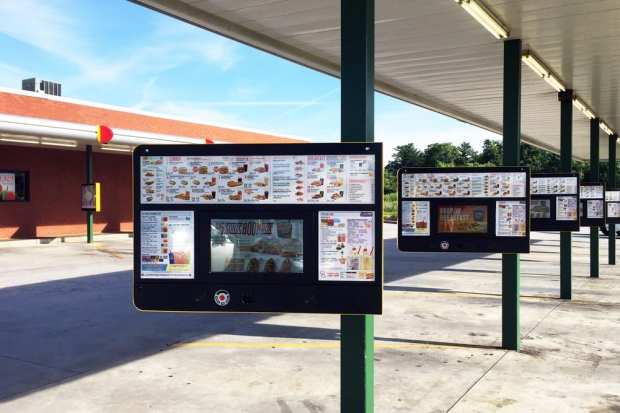Why Mastercard Put Voice-AI Ordering On The QSR Menu

It has happened to most consumers at least once. One pulls into a fast food establishment’s drive-through lane, scans an extensive menu and can’t make up their mind. Then, feeling the pressure of the line of cars behind them, they just pick something, anything, to be on their way — maybe not even what they wanted.
Mastercard, in a new partnership with kiosk hardware-maker ZIVELO, would like to solve that problem. As Stephane Wyper, SVP for New Commerce Partnerships at Mastercard, told Karen Webster in a recent interview, the partnership will personalize menu selections for consumers as they pull up to a dynamic menu board that presents the most relevant choices, and places their orders using voice technology.
“We had the idea that every menu should be different, because every customer has different requirements and needs,” he said.
This artificial intelligence (AI)-powered ordering experience was launched at Sonic Drive-In earlier this month.
How It Works
Consumers with an appetite for Sonic slushes and burgers have two possible experiences, according to Wyper.
The first, he noted, is the anonymous experience — personalized, not to the customer, but to the context. In those cases, consumers are shown hot chocolate in the winter, ice cream sundaes in the summer or the top-selling menu items at that particular location. Close, Wyper said, but maybe not entirely on the mark, there will always be those customers who want an ice cream sundae when it is 25 degrees outside, and those customers can interact with the voice assistant to get their orders on track.
Second, Sonic app users experience another layer of personalization — one in which the app recognizes and authenticates the user, then personalizes the menu to them. That could involve surfacing past orders or favorites, or screening out items that contain ingredients the customer is allergic to or just doesn’t like.
The point, he noted, is to make it easier for the consumer to navigate to what they want as quickly as possible. It’s a good experience for the consumer, but for Sonic and the other quick-service restaurants (QSRs) where this technology is headed in the future, the benefits are much more.
Flexible Pieces
Talking to brands, Wyper said, there is, of course, tremendous interest in using personalization and voice-AI to increase engagement and loyalty. However, there is also interest in using this voice-AI platform to tailor the experience to the QSR, improving efficiency and throughput in the process, regardless of the QSR format or footprint.
Wyper told Webster that the voice technology platform was designed with that in mind, integrating voice and AI into ZIVELO’s dynamic menu hardware and software kiosk platform. That makes the tech as suitable for drive-through or drive-in experiences as it is at kiosks inside QSR establishments.
“We have built this as a tech platform so they can customize and drill into certain areas. We want to be able to enable payments and a smoother transaction no matter what the customization desired is,” he said.